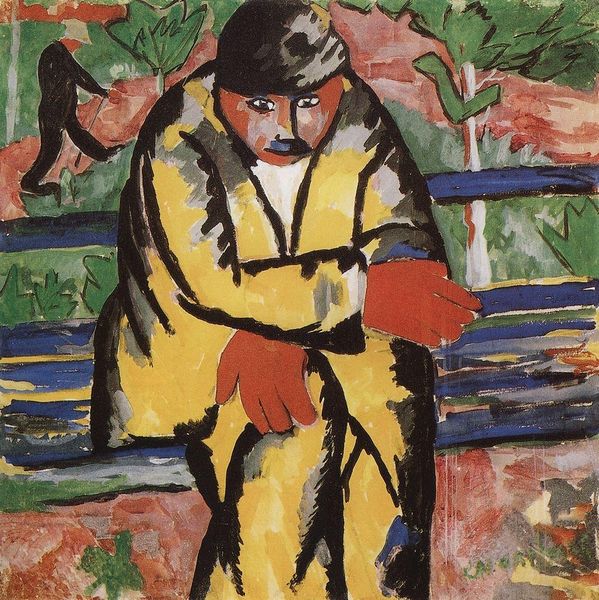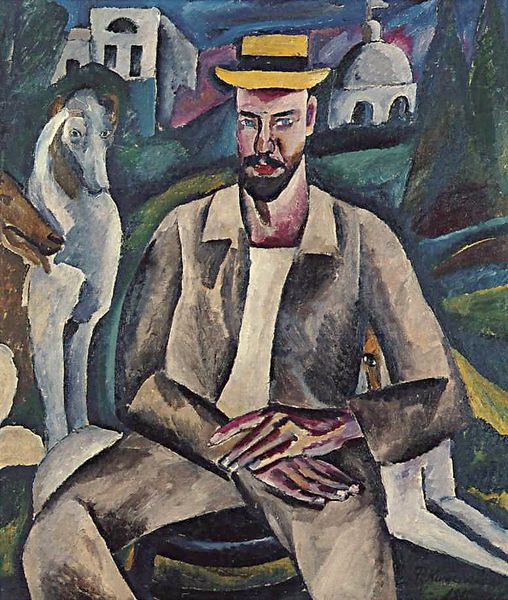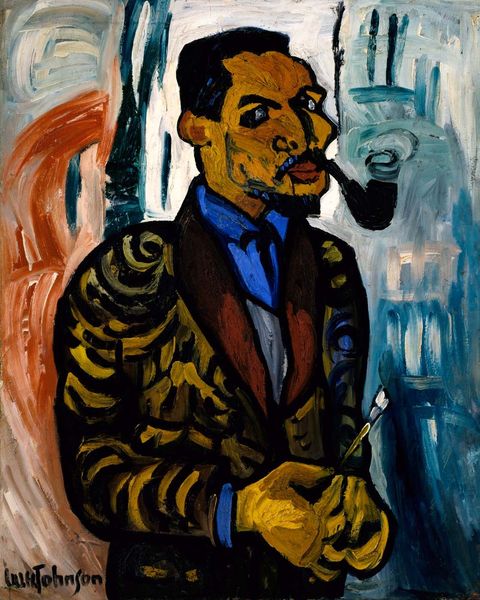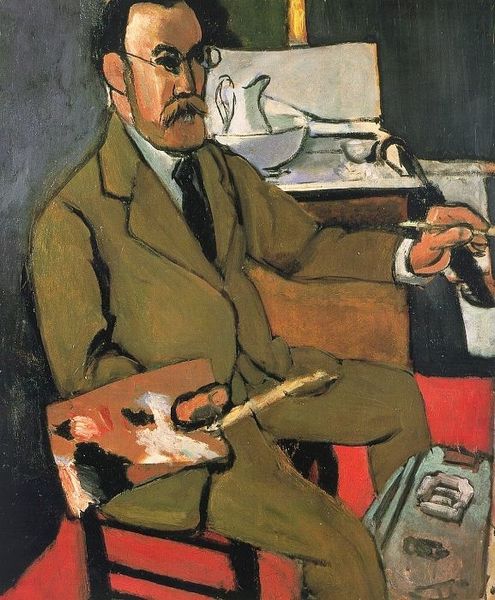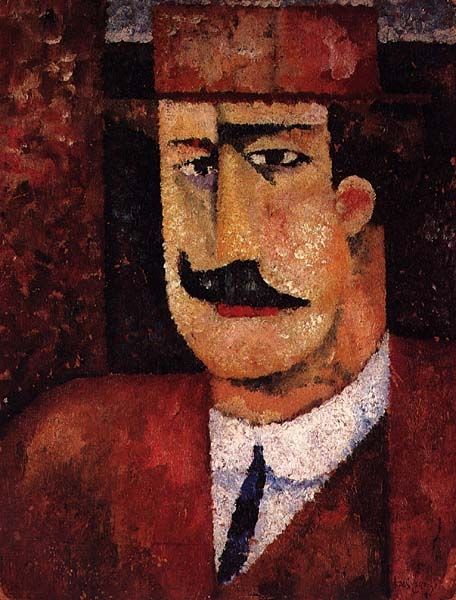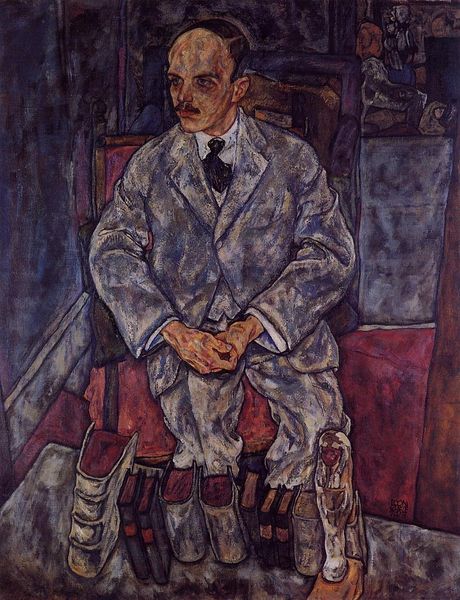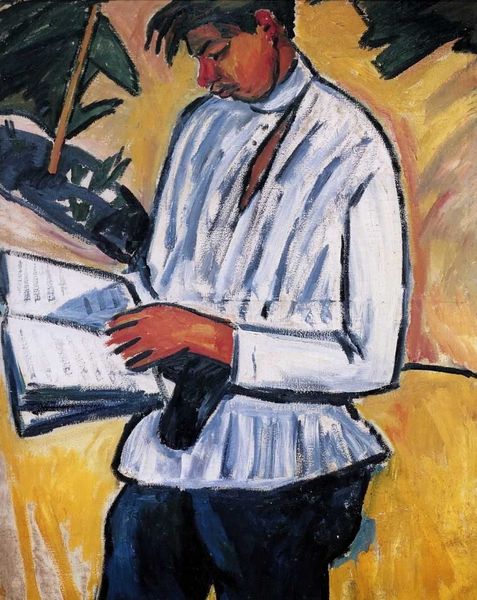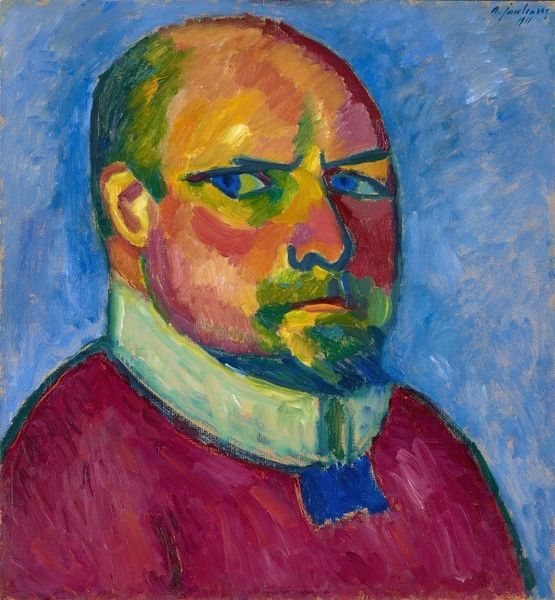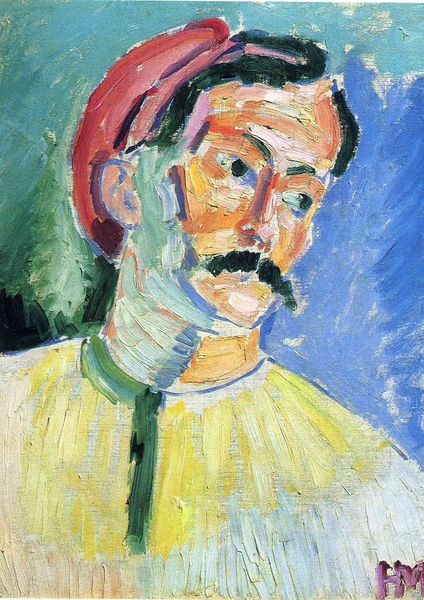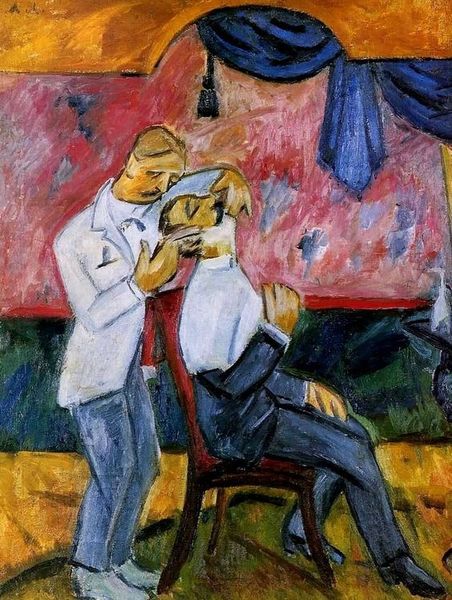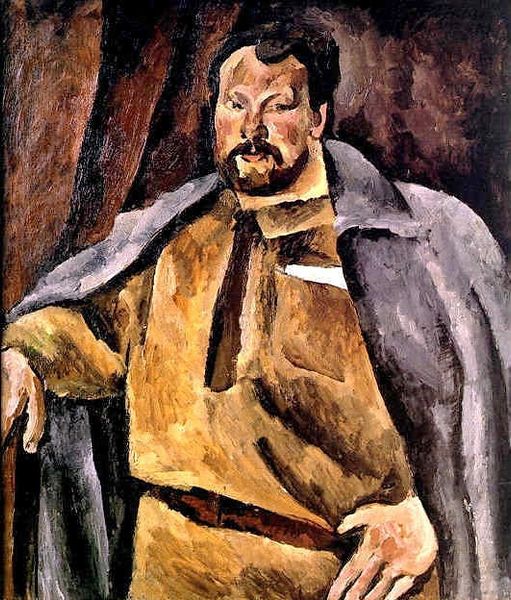
painting, oil-paint, impasto
#
portrait
#
painting
#
oil-paint
#
landscape
#
figuration
#
impasto
#
expressionism
#
genre-painting
#
history-painting
#
modernism
Dimensions: 108 x 87 cm
Copyright: Public domain US
Curator: Here we have Pyotr Konchalovsky's "Bullfighting amateur," painted in 1910. Look closely at the thickly applied impasto oil paint. Editor: The sitter has such an arresting gaze. A mix of amusement and exhaustion, perhaps? There's a strange duality in the man’s expression, framed against that rather chaotic background. Curator: Konchalovsky was part of the Bubnovy Valet group, also known as the Jack of Diamonds. It was an avant-garde group in Russia that challenged academic styles through their raw, deliberately unrefined techniques. You can observe this particularly in the materials themselves – the way he’s built up the paint surface. It wasn't necessarily about the subject, but the materiality. Editor: And what about the historical backdrop of amateur bullfighting? It reflects a fascination, at least for me, with themes of masculinity, performance, and ritualized violence. Notice that hand - gloved and almost blackened. It reflects the sitter's class status in relation to manual labor and high society, doesn't it? Curator: Yes! Think about the performative aspect of art making too; Konchalovsky foregrounding the act of applying the paint – that expressive brushwork mirrors the drama within the bullfighting scene behind the figure. The subject in the painting becomes another construction; labor meets artifice in both worlds represented here. Editor: And if we dig deeper, who gets to be an "amateur," versus a "professional," is crucial. Who holds the means and resources to dabble without dire consequences. Plus, this portrait invites us to think about Russian engagement with Spanish themes - a kind of cultural tourism that must've been both an influence and an escape from internal turmoil, socially. Curator: A perfect insight. This painting truly becomes a cultural artifact; as much about the social status of materials as the status of its subjects, literally! Editor: Absolutely. This piece definitely opens conversations about identity, labor, and spectacle. Curator: It prompts you to rethink boundaries in terms of who does art and how. Editor: And also how culture always involves dialogues of power and representation. Thank you for those insightful perspectives.
Comments
No comments
Be the first to comment and join the conversation on the ultimate creative platform.
